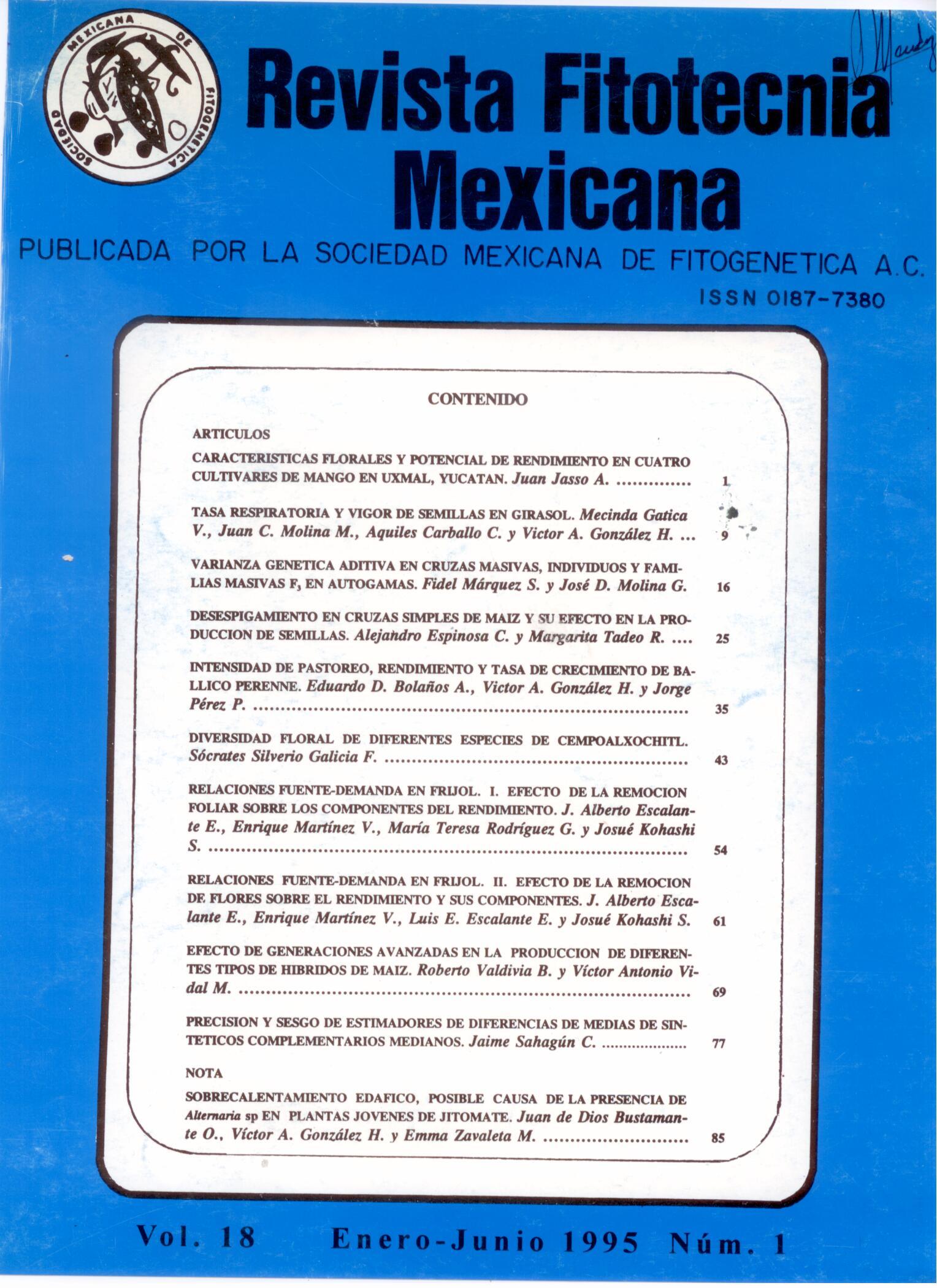SOURCE-DEMAND RELATIONSHIPS IN BEANS. H. EFFECT OF THE FLOWER REMOVAL ON YIELD AND ITS COMPONENTS
Main Article Content
Abstract
Two experiments were carry out to study the effect of manual removal of flowers in Phaseolus vulgaris L. One in glasshouse conditions in 1984 (experiment I) with the cvs. Cacahuate 72 (C72) of determinate growth habit (Type I) and Michoacán 12-A-3 (M12) of indeterminate bush bean growth habit (Type II) Other (experiment II) in field conditions in 1987 with M12. The treatments of flowers removal were applied at the beginning of flowering and consisted in, experiment I: a) removal of flowers during the first quarter of of the flowering period; b) removal of flowers during the second quarter and e) removal during the thint quarter of sudl period. In the case of the experiment D flowen were removed during the first aud second half of the flowering period. In both years the controls were intact plants. The varieties showed different response to the treatments. C12 for example, did not show any effect of the flowering removal on biomass production, nor on yield nor on its components. In M12 the removal of flowers caused an increase on node number, racime aud biomass. Under field conditions, when the flowers were removed during the first half of flowering period, pad number, seed number and seed yield were increased. This suggest that the effect of flowers removal on biomass production and yield components are related to plant growth habit and to the phenological stage when the removal is carried out.

